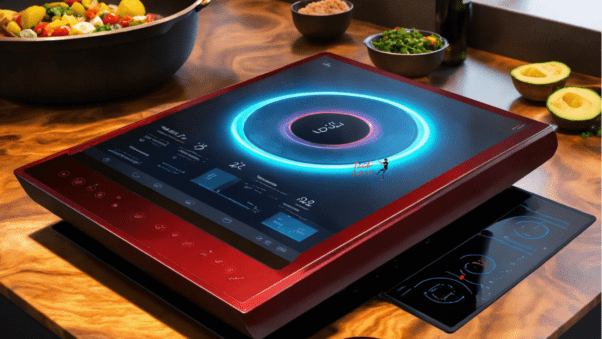[ez-toc]
In the era of technological advancement, the concept of a smart home is becoming increasingly popular. A smart home combines various devices and systems connected and can be controlled remotely. But what exactly is a smart home? Let’s dive into the components that are considered part of the smart home ecosystem.
Introduction to Smart Homes
Definition of a Smart Home
A smart home refers to a home where appliances, lighting, heating, air conditioning, televisions, computers, entertainment audio and video systems, security, and camera systems are interconnected and can be controlled remotely from a smartphone or computer.
Importance of Smart Home Technology
Smart home technology offers homeowners convenience, energy efficiency, enhanced security, and accessibility, making everyday life more convenient and efficient.
Components of a Smart Home

Smart Lighting Systems
Smart lighting systems allow users to control their lights remotely, set schedules and adjust the brightness and color temperature according to their preferences.
Home Security Systems
Home security systems include features such as smart cameras, motion sensors, doorbell cameras, and smart locks that provide surveillance and access control remotely.
Smart Thermostats
Smart thermostats allow users to adjust home temperatures remotely, adjust settings based on occupancy, and optimize energy use to save costs.
Entertainment Systems
Entertainment systems include smart TVs, speakers, and streaming devices that can be controlled via voice commands or mobile apps, offering a personalized entertainment experience.
Automated Appliances
Automated appliances include smart refrigerators, ovens, washing machines, and robotic vacuum cleaners that can be monitored and controlled remotely for added convenience.
Voice Assistants
Voice assistants such as Amazon Alexa and Google Assistant serve as central hubs for smart home control, allowing users to issue voice commands to operate various devices and systems.
Advantages of Smart Home Integration
Convenience
Smart home technology improves daily tasks and routines, offering convenience by automating processes and providing remote access to home devices.
Energy efficiency
Smart home devices optimize energy consumption by adjusting settings based on load, weather conditions, and user preferences, resulting in lower energy consumption and lower utility bills.
Enhanced Security
Smart home security systems provide real-time monitoring, alerts, and remote access, enhancing home security and giving homeowners peace of mind.
Availability
Smart home features such as voice control and remote access cater to people with disabilities or mobility issues, promoting inclusiveness and accessibility in the home environment.
Popular Smart Home Devices
Amazon Echo
Amazon Echo devices powered by Alexa serve as a versatile smart assistant that controls smart home devices, play music, provide information, and perform various tasks through voice commands.
Google Nest
Google Nest products, including thermostats, cameras, and speakers, integrate seamlessly with Google Assistant, offering smart home control and a personalized experience.
Philips Hue
Philips Hue smart lighting systems allow users to customize home lighting with millions of colors, graphics, and scenes, improving ambiance and comfort.
Nest thermostat
The Nest Thermostat learns users’ preferences, automatically adjusts settings, and provides energy usage information to help drive energy efficiency and cost savings.
Future of Smart Home Technology
Integration with the Internet of Things (IoT)
Smart home devices will continue to integrate with the Internet of Things (IoT), enabling seamless communication and interoperability between connected devices and systems.
Artificial intelligence and machine learning
Advances in artificial intelligence (AI) and machine learning will enhance the capabilities of smart home devices, enabling predictive analytics, personalized recommendations, and adaptive automation.
Sustainability and Green Technologies
Future smart home technologies will focus on sustainability and green technologies, promoting energy conservation, renewable energy integration, and environmentally friendly practices.
Considerations Before Investing in Smart Home Technology
Compatibility with existing systems
Before investing in smart home technology, consider compatibility with existing devices and systems to ensure seamless integration and optimal performance.
Security and Privacy Concerns
Address the security and privacy concerns associated with smart home devices by implementing strong encryption, authentication mechanisms, and regular software updates.
Cost and Availability
Evaluate the cost and affordability of smart home devices, considering the initial investment, running costs, and potential savings on energy costs and home insurance premiums.
Conclusion
In conclusion, a smart home includes a variety of interconnected devices and systems that offer convenience, energy efficiency, enhanced security, and accessibility for homeowners. From smart lighting and security systems to entertainment devices and voice assistants, smart home components contribute to a seamless and connected living experience. As technology continues to evolve, the future of smart home technology promises greater integration, intelligence, and sustainability.
FAQs (Frequently Asked Questions)
Are smart home gadgets easy to install and set up?
Yes, most smart home devices are designed to be easy to install and set up, often requiring no technical expertise.
Can smart home devices be controlled remotely?
Smart home devices can be controlled remotely via smartphone apps or voice commands from anywhere with an internet connection.
Are smart home devices compatible with multiple platforms?
Many smart home devices are compatible with popular platforms such as Amazon Alexa, Google Assistant, and Apple HomeKit, offering users flexibility.
How secure are smart home devices from cyber threats?
Manufacturers implement security measures such as encryption and regular updates to protect smart home devices from cyber threats, but consumers should also take precautions such as using strong passwords and updating software.
Can smart home devices save energy and reduce utility bills?
Yes, smart home devices optimize energy consumption and adjust settings based on load and weather conditions, resulting in energy savings and lower utility bills.

